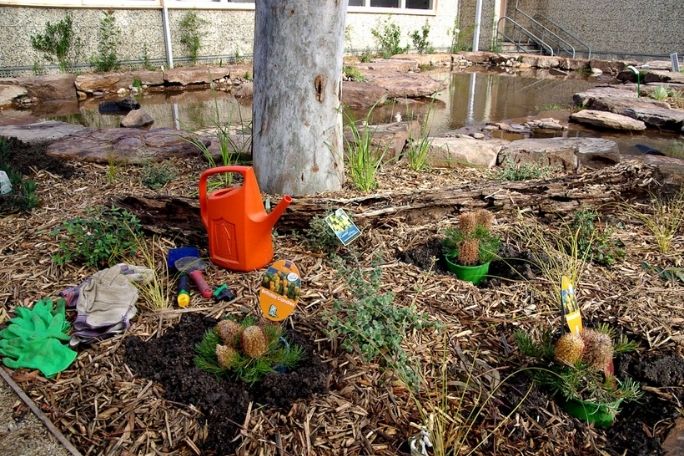Lesson summary
Students apply their learning by taking over a patch of garden and transforming it into a habitat. They decide how to safely remove weeds, cover the ground with some mulch and plant species that can attract the animals they want.
Learning intentions:
Students will...
- learn how to prepare an area to be planted, that weeds must be removed and the soil covered in mulch
- discover plants can be selected that will make a habitat for particular animals.
Lesson guides and printables
Lesson details
Curriculum mapping
Australian Curriculum content descriptions:
Year 3 Science:
- Living things can be grouped on the basis of observable features and can be distinguished from non-living things (ACSSU044)
Year 3 English:
- Listen to and contribute to conversations and discussions to share information and ideas and negotiate in collaborative situations (ACELY1676)
Year 4 Science:
- Living things, including plants and animals, depend on each other and the environment to survive (ACSSU073)
Year 4 English:
- Interpret ideas and information in spoken texts and listen for key points in order to carry out tasks and use information to share and extend ideas and information (ACELY1687)
Syllabus Outcomes: ST2-10LW, EN2-1A, EN2-6B.
Indoor or outdoor activity: Indoor
Time required: Over a few weeks or months.
Level of teacher scaffolding: Help to obtain tools, plants and mulch. Keep students safe while working outside.
Resources required
- Writing materials
- Gardening tools and gloves
- Plants and mulch
Additional info
This is an original Cool.org lesson. Facts and figures in these lessons may have changed since this lesson was published. We always endeavour to update our resources in a timely manner, but if you see an error or issue in our resources please get in touch with us.


Welcome back!
Don't have an account yet?
Log in with:
By signing up to Cool.org you consent and agree to Cool's privacy policy to
store, manage and process your personal information. To read more, please see
our privacy policy here(Opens in new tab).
Create your free Cool.org account.
Many of our resources are free, with an option to upgrade to Cool+ for premium content.
Already have an account?
Sign up with:
By signing up to Cool.org you consent and agree to Cool's privacy policy to
store, manage and process your personal information. To read more, please see
our privacy policy here(Opens in new tab).